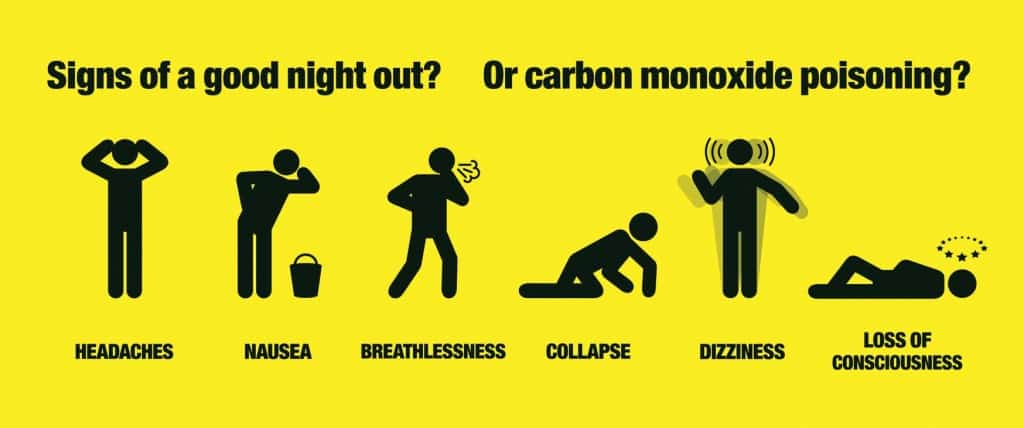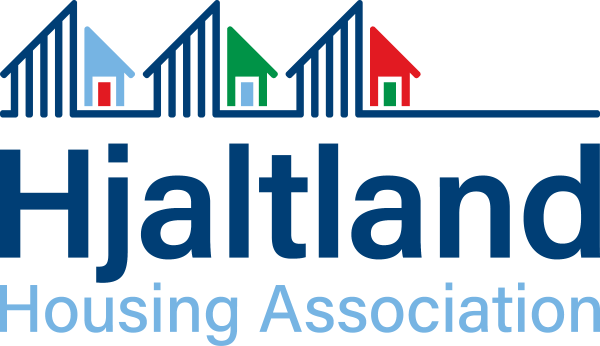Information about the shut down of the Radio Teleswitch Service in June 2025.
Gas Safety in the Home
The Association does not provide a gas supply or kitchen appliances with its properties. Any tenant who wishes to have a gas supply and kitchen appliance installed must request permission.

Thinking of Having a New Gas Kitchen Appliance Fitted?
Here is the process to follow should you wish to install a gas supply and kitchen appliance, In the first instance, if a tenant would like to install a gas kitchen appliance in their home, they must request permission from the Association to install it.
- Contact a Gas Safe registered business for advice. You can search for one online here or call the Gas Safe Register free on 0800 408 5500 for details of suitable businesses in your local area.
- Write to the Association and request permission to have the work done. Provide details of where the kitchen appliance will be installed and details of the Gas Safe registered business / engineer who will be carrying out the installation must be included in this request.
- We will then consider the request and write to you with our decision.
Note: That only ground floor properties will be considered for any gas kitchen appliance installation.
Note: All gas cylinders must be stored on a suitable hardstanding and secured to the external wall of the property with stainless steel fixings.
PLEASE DO NOT PROCEED WITH THE GAS INSTALLATION UNTIL PERMISSION FROM THE ASSOCIATION HAS BEEN GIVEN.
If permission is given, the Association requires the following conditions to be adhered to:
- Complete the alteration request form and return it to Hjaltland Housing Association before any work is carried out.
- Any works involving gas being fitted, must be carried out by a registered Gas Safety Engineer who will issue a certificate upon completion of the works. A copy of the certificate must be sent to Hjaltland Housing Association.
- The gas must be delivered through a sleeved, micro-bore pipe.
- The gas cylinders must be stored on a suitable hardstanding and secured to the external wall of the property with stainless steel fixings.
- The tenant must install a carbon monoxide detector which complies with; BS EN 50291-1:2010, powered by a battery designed to operate for the working life of the detector.
- The alteration completion form must be sent to Hjaltland Housing Association once the work has been carried out. The Association will carry out its own inspection of the work.
- The tenant is responsible for ensuring that the gas kitchen appliance, pipework and fitments are regularly maintained and checked by a Gas Safe registered engineer at least every 12 months. Tenants should provide the Association with copies of their annual maintenance records. The Association reserves the right to request a copy of these at any time.
- The full cost of the alteration and any repairs or maintenance work relating to it will be the responsibility of the tenant.
- Any damage caused to Hjaltland Housing Association property by carrying out the proposed works will be rectified by the Association and the cost charged to the tenant.
- At the end of the tenancy we ensure that all gas kitchen appliances, connections and pipes are removed, the outgoing tenant will be charged for this work if they have not had the fittings removed and completed any repairs caused by the removal.
- Any new tenant in the property wishing to install gas kitchen appliances would then also have to apply for permission to have them installed.
When the Work is Completed:
- The engineer should provide you with a Completion Certificate, tenants must provide the Association with a copy of this.
- Remember all gas kitchen appliances in your home need to be serviced and checked annually by a Gas Safe registered engineer, tenants must provide the Association with a copy of this
- Buy an audible carbon monoxide alarm marked EN 50291 and install it (in accordance with manufacturer’s guidelines) near to your gas kitchen appliance.
- Remember to test your carbon monoxide alarm regularly, at least monthly, to ensure they are working properly. To test your CO alarms, press and hold the test button on the alarm. The alarm will sound until you release the button.
Anyone who has a kitchen appliance installed in their home should be aware of the risks associated with gas. Here is gas safety advice and links to assist in raising awareness of the dangers
Get Your Kitchen Appliances Checked
All gas kitchen appliances and fitments in your home should be safety checked by a Gas Safe registered engineer annually and serviced according to manufacturer’s instructions.
Any appliance left unchecked could leave you at risk of carbon monoxide poisoning.
Tenants can sign up to a free reminder service at StayGasSafe.co.uk to get an email or text each year so you don't forget.
Gas Safety Tips
Here are some top tips for gas safety in your home:
- Have all gas appliances at your property safety checked annually by a Gas Safe registered engineer. As part of any safety check ensure that the engineer carries out a tightness test of the pipework to ensure there are no gas leaks, and a visual inspection of accessible gas pipework should also be completed to ensure the installation is in good condition.
- Find or check a Gas Safe registered engineer in your area using this handy online search or call Gas Safe directly on 0800 408 5500.
- Make sure you ask to see your engineer’s Gas Safe Register ID card both front and back. The front will confirm their registration and identity, the back will confirm they can do the gas work you’ve employed them to do. Details of what you should be checking for can be found here on the Gas Safe website.
- Stay aware of the symptoms of carbon monoxide poisoning – headaches, dizziness, nausea, breathlessness, collapse and loss of consciousness. There is a section on carbon monoxide poisoning and the symptoms to look for further down this page.
- Buy an audible carbon monoxide (CO) alarm (before purchasing a CO alarm, always ensure it complies with British Standard EN 50291 and carries a British or European approval mark, such as a Kitemark.) and install it in accordance with manufacturer’s guidelines near to your gas appliance. Alarms are a strong second line of defence against carbon monoxide poisoning. Standards for the performance of CO alarms have become more stringent over recent years and so older alarms may not react as quickly as newer alarms. Check the manufacturer’s recommendations about how you should fit and test your alarm to ensure that the unit and the batteries are in good condition.
- Look out for warning signs that a gas appliance isn’t working properly – lazy yellow flames, excessive condensation and black marks/stains. However, gas appliances can be unsafe without displaying these symptoms, so best practice is to have them checked every year.
- Use gas appliances for their intended purposes only, e.g. do not use a cooker to heat a room.
- Provide enough ventilation for gas appliances to burn correctly and make sure no air vents or chimneys are blocked.
Controls for Gas Cylinders
When using gas cylinders extra care must be taken. This is because storage facilities for gas cylinders must meet certain safety standards. You should store as few gas cylinders as possible.
You should also make sure there is suitable ventilation where the gas is being stored and used, particularly at low level. This is because gas from cylinders is heavier than air so there is a risk of asphyxiation.
Guidance states that the storage area must:
- Be secured against attack from vandals
- Have warning signs in place to show the hazards
- Allow for cylinders to be stored in an upright position, unless labelling states otherwise
- Be easily accessible
- Be kept free of flammable sources and combustible materials, including vegetation
- Be located away from open drain
- Check connections and piping if damaged or weathering then ask a Gas Safe registered engineer/company to remove and replace.
Risks of Unsafe Appliances
In order to stay fully gas safe in your property, you’ll need to be mindful of these potentially dangerous consequences of having poorly maintained or faulty gas kitchen appliances.
Gas Leaks
Gas leaks can occur from faulty appliances and pipework. Whilst gas is not poisonous like carbon monoxide (CO), leaks can lead to fires or explosions. Use the Cut Off Valve to shut off the gas supply. A distinctive odorant is added to the gas to make it detectable – you can usually smell this briefly any time you turn a gas hob on. If you think you can smell gas, take action and call 0800 111 999 immediately.
If you have any signs of damage or corrosion (rust, green discolouration) on your gas pipework or you suspect a gas leak, make sure you contact a Gas Safe registered engineer to check it out – it could cause a leak if left unchecked. Any such check should involve a tightness test to ensure there are no gas leaks and a visual inspection of the installation to check that it is in good condition.
Fires and Explosions
By its very nature gas is highly combustible. Safe appliances burn gas in a controlled manner to help us cook our food. Should gas leak from a faulty appliance or pipework, it can spread quickly and there is a risk of it accidentally igniting causing a fire or explosion, with potentially devastating results.
Carbon Monoxide Poisoning
You can find out more information on carbon monoxide poisoning further down the page, but this is another potentially deadly consequence of having poorly maintained or unsafe gas appliances in your home.
If you think you smell gas or suspect carbon monoxide poisoning take action, use the cut off valve to shut off the gas supply and call Gas Emergency Helpline 0800 111 999 immediately.
Note: One of the best ways to stay safe is to ensure that your gas appliances are serviced regularly and checked once a year.
What is CO Poisoning?
Unsafe gas appliances can produce a highly poisonous gas called carbon monoxide (CO). It can cause death as well as serious long term health problems such as brain damage.
CO is produced by the incomplete burning of natural gas or liquefied petroleum gas (LPG). This happens when a gas appliance has been incorrectly fitted, badly repaired, or poorly maintained. It can also occur if flues, chimneys, or vents are blocked.
Oil and solid fuels such as coal, wood, petrol, and oil can also produce carbon monoxide.
CO poisoning occurs when you breathe in the gas, and it replaces oxygen in your bloodstream. Without oxygen, your body tissue and cells die. Even small amounts of the gas can cause CO poisoning, and long-term effects can include paralysis and brain damage.

Remember the six main symptoms to look out for:
- Headaches
- Nausea
- Breathlessness
- Collapse
- Dizziness
- Loss of consciousness
Being aware of the symptoms could save your life. CO symptoms are similar to those of flu, food poisoning, viral infections and fatigue. That’s why it’s quite common for people to mistake this very dangerous poisoning for something else.
Other signs that could point to CO poisoning:
- Your symptoms only occur when you are at home and seem to disappear when you leave home.
- Others in your household (including pets) are experiencing similar symptoms and they appear at a similar time.
What to do if You Suspect CO Poisoning
- Get fresh air immediately. Open doors and windows, turn off gas appliances and leave the house.
- See your doctor immediately or go to hospital - let them know that you suspect CO poisoning. They can do a blood or breath test to check.
- If you think there is an immediate danger, call the Gas Emergency Helpline on 0800 111 999.
- Ask a Gas Safe registered engineer to inspect your gas appliances and flues to see if there is a dangerous problem.
The Warning Signs of a CO Leak
Any of the following could be a sign of CO in your home:
- Flames of a lazy yellow or orange colour on your gas hob, rather than being a crisp blue
- Dark staining on/around appliances
- Pilot lights that frequently blow out
- Increased condensation inside windows.
Faulty appliances in your home can lead to CO poisoning, get your gas appliances checked regularly to avoid this.
What Can You do About It?
- The first and best thing you can do to minimise the risk that your gas appliances produce CO is to ensure that they are safety checked annually by a suitably competent and qualified Gas Safe registered engineer. You can find an engineer here.
- If you already have a service plan then an annual check may be included as part of that, check the details.
- An audible CO alarm will activate in the presence of CO. It’s a good second line of defence but can only tell you when something has already gone wrong.
- Make sure any alarm you buy is marked to EN 50291 and has the British Standards Kitemark.
CO Alarm - A Good Second Line of Defence
Modern CO alarms are similar in design to smoke alarms (which do not detect CO) and can be purchased from around £15 at many major retail outlets including DIY stores and supermarkets. We do not recommend the use of 'black spot detector' warning strips - they are too easy to miss and won't alert you if you have a CO leak when you're asleep.
It’s advisable to fit an alarm in every room with a gas appliance, and when installing and siting the alarm make sure you refer to the manufacturer’s instructions. Typically, audible CO alarms have a battery life of up to 5 years. If you’re unsure which alarm to get, you can ask a Gas Safe registered engineer for advice.

